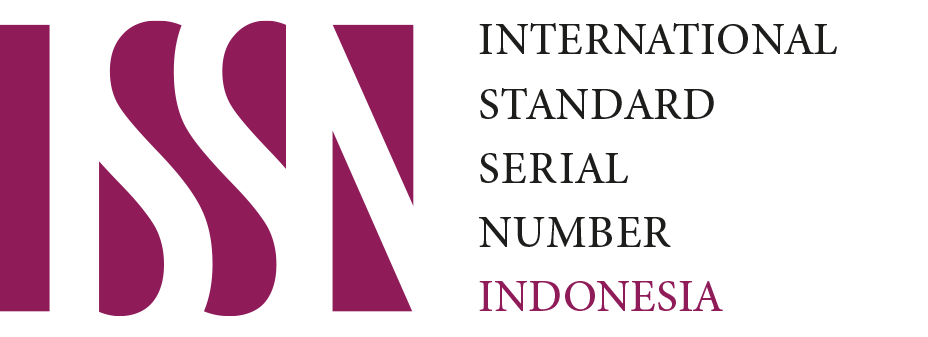The Potential of Modified Transport Media as a Support for Bacterial Culture Examination
Abstract
Bacterial culture sample transport is a critical point in the culture chain from sampling to final diagnosis. The ideal transport medium should be able to nurture the ability of bacteria to thrive coming from the sample without allowing them to grow. Transport media that already exist in Indonesia, namely in the form of powder, tend to be very expensive in price and transport media that can be used directly besides being expensive have a fast expiration period, which will increase the cost of treatment and services in hospitals, an innovation is needed by making alternative transport media from materials that are easily available around us that can be useful for taking samples. The purpose of this study is to see the potential of alternative transport media so that it can support diagnostics in bacterial culture. The study method uses an experimental laboratory with a true-experimental post-test-only design. In testing alternative transport media, sampling from diabetic foot ulcer patients using tofu pulp transport media (MTAT) and ICU swab beds with coconut charcoal transport media (MTAK). Samples of each media were taken, and as many as 20 samples were taken. In addition to treatment samples, each sample is confirmed using standard transport media as its control. This study obtained dominant bacteria from diabetic ulcer samples on alternative MTAT Citrobacter sp 6 (30%) and Control Citrobacter sp 8 (40%). Meanwhile, the ICU swab bed samples obtained dominant bacteria MTAK Bacillus sp 10 (50%) and Control 11 (55%). The conclusion of these two alternative transport media can be used as alternative transport media because they have the same growth results compared to standard media, and it can be ascertained that it is really bacteria that usually grow without contamination.
Keywords
Full Text:
PDFReferences
Bekele, T., Assefa, A., Verstraete, L., Desta, A. F., Al-mulla, T., Baye, K., Ababa, A., Ababa, A., Sciences, C., Ababa, A., Ababa, A., & Kilo, A. (2023). Water, sanitation, and hygiene in selected health facilities in Ethiopia: risks for healthcare acquired antibiotic resistant infections. 1–20. https://doi.org/10.1101/2023.07.12.23292549
Boiko, I., & Krynytska, I. (2021). Comparative performance of commercial amies transport media with and without charcoal for neisseria gonorrhoeae culture for gonococcal isolation and antimicrobial resistance monitoring in Ukraine. Germs, 11(2), 246–254. https://doi.org/10.18683/germs.2021.1261
Gunardi. (2020). Profile of HbA1c, Cholesterol and Triglyceride in Type 2 Diabetes Mellitus. Jaringan Laboratorium Medis, 2(2), 89–93.
Ikken, Y., Charof, R., Elouennass, M., & Sekhsokh, Y. (2021). The novel biphasic medium for transport, culture and conservation at an ambient temperature of Neisseria meningitidis, Streptococcus pneumoniae and Haemophilus influenzae. World Journal of Microbiology and Biotechnology, 37(11), 11274. https://doi.org/10.1007/s11274-021-03149-5
Krisniawati, N., & Widhi, A. P. K. N. (2021). Prevalence and Risk Factors of ESBL-producing Enterobacteriaceae in The Community. Journal of Biomedicine and Translational Research, 7(1), 1–6. https://doi.org/10.14710/jbtr.v7i1.10051
Lastian, Emeralda, P., Arifin, S., Kesehatan, A., Kesehatan, P., & Surabaya, K. (2019). Pertumbuhan Bakteri Staphylococcus Aureus Pada Media Modifikasi MSA dengan Sumber Protein Hewani Ikan Nila (Oreochromis Niloticus) dan Sumber Protein Nabati Ampas Tahu. Jurnal Analis Kesehatan Sains, 8(1), 1–4. http://repo.poltekkesdepkes-sby.ac.id/6496/1/EMERALDA LASTIAN-P27834117015.pdf
Patricia, V., Yani, A., Syech, J., No, N. A., Agung, B., & Jaya, C. (2023). Identifikasi Bakteri pada Luka Penderita Diabetes Melitus di Rumah Perawatan Luka Diabetes Identification of Bacteria in The Wounds of Diabetic Mellitus Sufferers at Diabetic Wound Care Homes ISJWOROWATI Program Studi Teknologi Laboratorium Politeknik Kesehatan Kemenkes Banten Abstrak. 05(01), 12–16.
Riedel, Stefan, Stephen A.Morse, Timothy Mietzner, Steve Miller, et all. (2019). Jawetz, Melnick & Adelberg’s MEDICAL MICROBIOLOGY. In Dairy Industries International (28th ed., Vol. 78, Issue 7). Mc Graw Hill.
Ryan KJ, Ray CG, Ahmad N, Drew WL, Lagunoff M, Pottinger P, et al. (2019). Sherris Medical Microbilogy. In M. KENNETH J. RYAN (Ed.), Prevention and Control of Infections in Hospitals (Seventh). Mc Graw Hill Education.
Serra Neto, A., Marques, S. G., Bomfim, M. R. Q., Monteiro, S. G., de Souza, R. C., & Nunes, R. A. (2023). Microbiological Analysis of Surgeons’ Hands in a Public Hospital in São Luis, Maranhão State, Brazil: A Cross-Sectional Study. Microorganisms, 11(8). https://doi.org/10.3390/microorganisms11081895
Sofyanita, Eko Naning, A. I. (2021). Rasio Penutupan Luka pada Tikus Diabetes Diinduksi Streptozotocin dengan Perlakuan Dressing Tipe Pasif dan Interaktif ( Penelitian Pendahuluan ) Wound Closure Ratio in Streptozotocin-Induced Diabetic Mice Treated by Passive and Interactive Dressing ( Pilo. Jaringan Laboratorium Medis, 03(02), 67–71.
Sekitoleko, R. T., Oshabaheebwa, S., Munabi, I. G., Tusabe, M. S., Namayega, C., Ngabirano, B. A., Matovu, B., Mugaga, J., Reichert, W. M., & Joloba, M. L. (2020). The role of medical equipment in the spread of nosocomial infections: a cross-sectional study in four tertiary public health facilities in Uganda. BMC Public Health, 20(1), 1–11. https://doi.org/10.1186/s12889-020-09662-w
Tariq, S., Imtiaz, F., Ahmed, B., Saeed, S., Larik, I. A., & Sial, M. A. (2021). Frequency of Helicobacter Pylori in Patients with Dyspepsia in Civil Hospital, Khairpur. Pakistan Journal of Medical and Health Sciences, 15(10), 2769–2771. https://doi.org/10.53350/pjmhs2115102769
Tuntun, M. (2022). Pola Bakteri Kontaminan Serta Resistensinya di ICU dan Ruang Operasi Pada Rumah Sakit di Bandar Lampung Patterns of Contaminant Bacteria and Its Resistance in ICU and Operations at Hospital in Bandar Lampung. 11(1), 1–10.
Wahyuningsih, D. S., & Ekawati, E. R. (2021). Deteksi Cemaran Bakteri Penyebab Infeksi Nosokomial pada Membran Stetoskop Detection of Bacterial Contamination Causing Nosocomial Infection in Stethoscope. 5(1).
Waleleng, A. A., Waworuntu, O. A., Rares, F. E. S., Studi, P., Dokter, P., Kedokteran, F., Sam, U., Mikrobiologi, B., Kedokteran, F., & Sam, U. (2024). Identifikasi Pola Bakteri dan Uji Sensitivitas Antibiotik di Kamar Bedah RSU GMIM Pancaran Kasih Manado. 6(2), 296–302.
Złoch, M., Maślak, E., Kupczyk, W., & Pomastowski, P. (2023). Multi-Instrumental Analysis Toward Exploring the Diabetic Foot Infection Microbiota. Current Microbiology, 80(8), 1–15. https://doi.org/10.1007/s00284-023-03384-z
Zuhair Wahid, H. (2022). First Report Of New Delhi Metallo-Beta-Lactamase (NDM) Producing Citrobacter Braakii Isolated From Diabetic Foot Infection In Iraq. Medical Science Journal for Advance Research, 3(4), 209–214. https://doi.org/10.46966/msjar.v3i4.86
DOI: https://doi.org/10.31983/jlm.v6i1.10574
Article Metrics
Refbacks
- There are currently no refbacks.
Copyright (c) 2024 Jaringan Laboratorium Medis

This work is licensed under a Creative Commons Attribution-ShareAlike 4.0 International License.
--
OFFICE INFORMATION :
Jurusan Analis Kesehatan - Kemenkes Poltekkes Semarang, https://analis.poltekkes-smg.ac.id Jl. Wolter Monginsidi No. 115 Pedurungan Tengah, Semarang, Jawa Tengah, Indonesia ; Email: jlm@poltekkes-smg.ac.id
 Jaringan Laboratorium Medis disseminated below Creative Commons Attribution-ShareAlike 4.0 International License.
Jaringan Laboratorium Medis disseminated below Creative Commons Attribution-ShareAlike 4.0 International License.
Our Related Accounts :
 |  |  | |||||
| MoU PATELKI | ISSN BRIN | Google Scholar | Garuda | Stat Counter | DOI Crossref |
| Jaringan Laboratorium Medis © 2019 |










